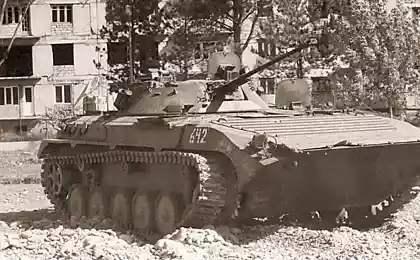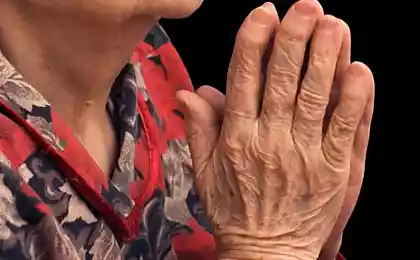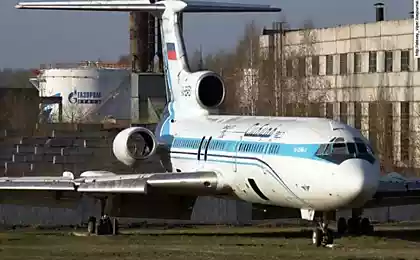1019
Abandoned and forgotten
Perhaps this is the most horrible place I've come for the last time. On an abandoned cemetery on the northern outskirts of Dresden, buried the children of officers of the Soviet garrison. A lot of children. Dozens of identical tombstones plitochek almost buried in the ground and barely distinguishable among the grass ...
33 photos via ffeztromop

I'm afraid to even suggest that there children did what they were dying in such numbers. Nowhere else have I seen so many children's graves in one place. The cemetery is abandoned for more than twenty years, that is since the withdrawal of Soviet troops from Germany. Russian officials prefer to pretend that the cemetery does not exist in nature. Meanwhile, the German authorities prepared in the near future to even the graves of Soviet children to the ground.
Officially, it's called the northern sector of the Soviet garrison cemetery Dresden garrison Western Group of Forces. The first graves appeared here in 1949, when out of space on the main garrison cemetery next door. The last burial here was made in September 1987. It is not clear, however, why the victims in peacetime Soviet citizens could not go home. All the years of existence of the northern sector are buried more than 650 people, including 350 military servicemen and 250 civilians.
In a separate section of the cemetery are buried 160 children. Generally, it is quite infants aged from several weeks to one year. Now children's graves in an abandoned cemetery look like this:

03

04

05
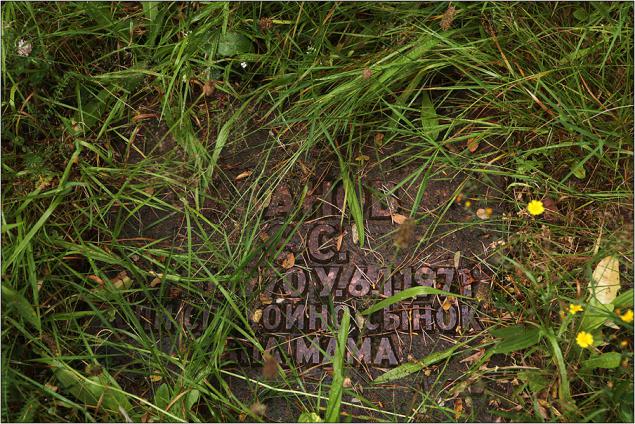
In this picture, the most attentive will find just six abandoned children's graves:
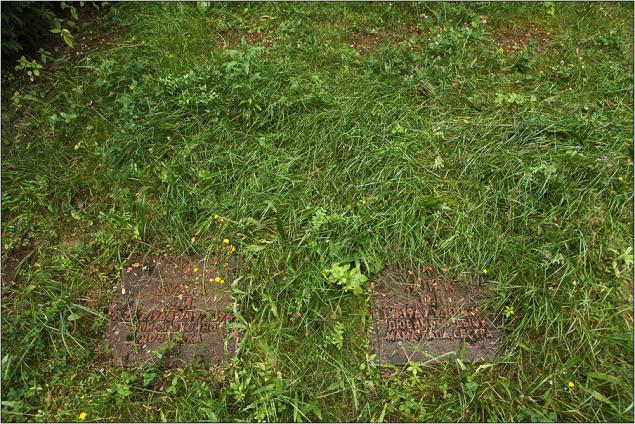
Children began to appear on the graves of the garrison cemetery after the war. At first the children who died were buried in a small area adjacent to the main area of the cemetery. Only when there is not space left for children's burials identified a new site in the northern Gaza cemetery:

08

09
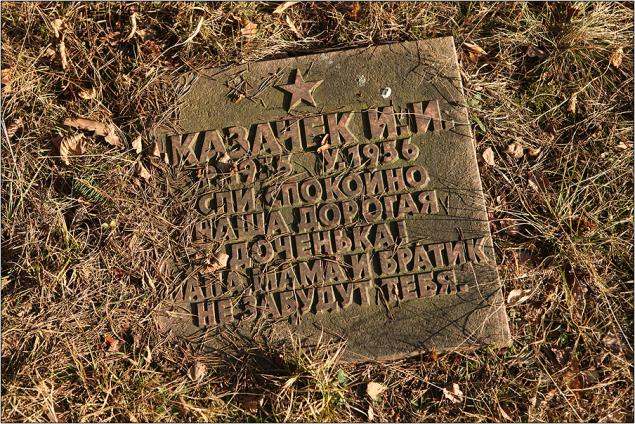
10

11

12

13

Tomb of the Western Group of Forces soldiers now look roughly the same abandoned. This is a relatively well-kept plot cemetery with the graves of the 1950s:

15
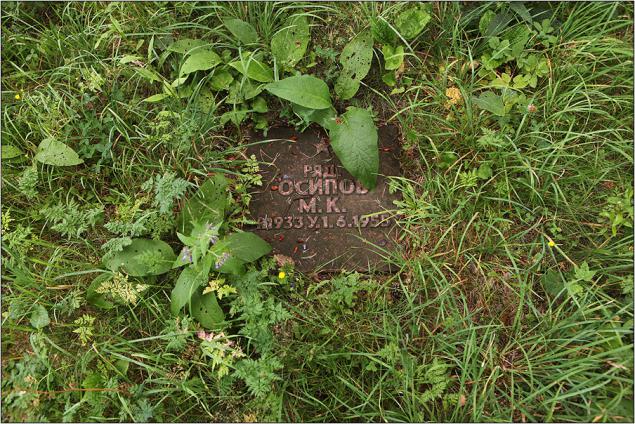
16

17

18
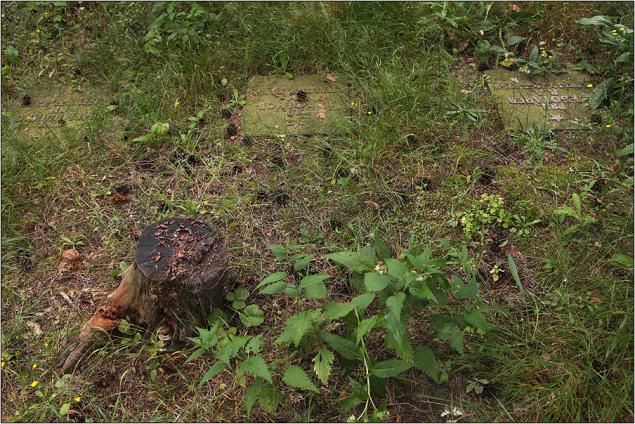
19

20
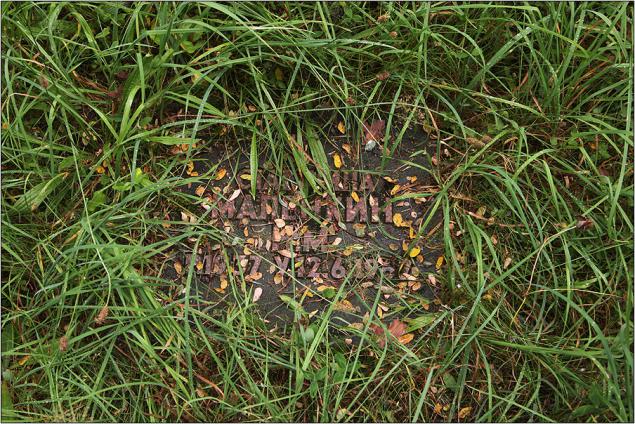
A children's grave it again:
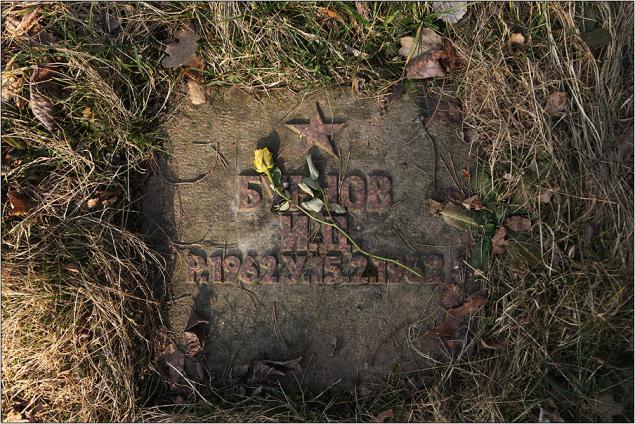
22

23

24

Try to understand how it was that the Soviet garrison cemetery in Dresden, has been brought to such a sorry state. There is an intergovernmental agreement on the care of the burial sites in Russia and Germany, signed in December 1992 by the then Russian Foreign Minister Andrei Kozyrev, during a visit to Moscow, Chancellor Helmut Kohl. Under this agreement, the German side took care of all the maintenance costs of the Soviet military graves in the territory of Germany. The problem, however, is that the burial wartime German law considered only the graves of persons who died before 31 March 1952.
Where did this data is difficult to say. It was first mentioned back in the German law of 1965 on the care of war graves. Now this law is called the law of the preservation of the graves of victims of war and domination by violence. The same date is later migrated to said an intergovernmental agreement as its text prepared German side. Today, it is assumed that the signing of the agreement in the form of the Russian authorities was a mistake, because it completely ignores the fate of post-war Soviet graves. However, in hindsight the mistake is now quite difficult to fix.
Thus, under the protection of the Russian-German agreement was the only part of the garrison cemetery founded in Dresden, where are buried the Soviet soldiers who died in the last days of World War II and died of his wounds in the early postwar years. All dead or killed after March 31, 1952 are considered to have died in peacetime and, accordingly, under the agreement does not fall. In this situation, it would be logical to assume that the care of these graves will take over the Russian side. Like it or not, this is our soldiers. However, the Russian authorities preferred to forget about the existence of the cemetery.
Cole Porfirevu can say damn lucky. He died a year later after the war and was buried among the graves of Soviet soldiers on the mainland Garrison cemetery. His grave in the near future is not threatened. The content of this part of the cemetery is paid from the budget of the German:

After the withdrawal of Soviet troops from Germany, the Soviet garrison cemetery in Dresden, shifted the balance of the city. From that moment held here only the most necessary improvement works. Cemetery gradually come to desolation. Since 1996, a new cemetery was the nominal owner of the real estate and construction management of the Federal State of Saxony. In German this place called Sächsisches Immobilien- und Baumanagement, abbreviated to SIB.
The new owner of the cemetery came out with an offer ... to carry all the graves of the northern sector of the cemetery. Thus, it is planned to reduce the costs of caring for the cemetery to a minimum. Roughly speaking, the tombstones is proposed to abolish that they should not stumble on the lawn mower. Initial plans Saxon authorities suggested the elimination of all gravestones, all the elements of improvement and most of the trees in the northern sector. Themselves with the dead remained in their original places in the land. The names of those buried in the cemetery was planned to write three or five steles near the entrance to the cemetery. This reconstruction of the cemetery would have cost 250 million euros. But then the content of the cemetery converted into one big lawn, dispense would be relatively cheap.
It's like, these initial plans do not meet with understanding of first secretary of the Russian Embassy in Berlin, Vladimir Kukina, who oversees the embassy military memorial work, so the project has been amended. The general concept is preserved, but now plan to install over 20 obelisks lists buried. That is, the relatives will be able to assume at least roughly where their relatives are buried. Individual graves, however, will still be destroyed. The price of reconstruction rose initially to 300 thousand euros, and then to 350 thousand euros. This money will be allocated from the budget of the Federal State of Saxony.
That's a visual map of the Soviet garrison cemetery before and after the proposed reconstruction:
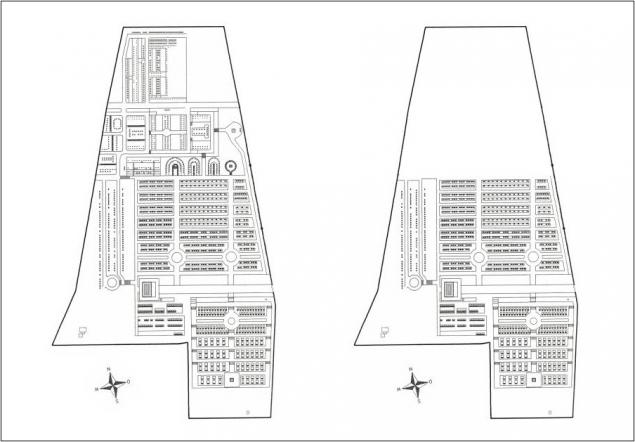
Trying to keep the cemetery in this individual is taken only by German activists. It formed an initiative group for the protection of the Soviet war memorial in Dresden. It is headed by the Dresden journalist Yana JNOC. She believes that the cemetery is one of the latest evidence almost a half-century stay in the garrison of the Soviet troops, and therefore must be preserved for history. Some rescue activities graves is still chairman of the German-Russian Cultural Institute in Dresden Wolfgang Shelike.
The activists offered help in the care of the graves, offered twice a year to carry out cleaning of the cemetery by the Russian emigrants and students from both countries. These proposals went unanswered by the Saxon government. At the same time, activists wrote to Putin, addressed to former Soviet soldiers who once served in Dresden. They wrote in the Russian Embassy Vladimir KUKIN. Not a word in reply. And the journalist Yana JNOC confident that the Russian authorities do not know the plans for the destruction of the cemetery.
Most activists are outraged by the fact that German taxpayers money in the amount of 350 thousand euros is actually to be spent on the destruction of the historical monument. For its part, the Office SIB argues that in order to bring the cemetery to the conservation of historic tombstones will cost about one million euros. "This is very similar to the fictional figure, designed to shock the public opinion," - says Yana JNOC.
Some success, activists still have. In 2010 the German federal authorities have included the northern sector of the Soviet garrison cemetery in the register of cultural monuments. Earlier in the register number only burials of the Second World War. Now the project of reconstruction of the cemetery should be agreed with Berlin. As a result of work that has to be completed in 2011, has not yet begun. However, it is not excluded that the reconstruction of the cemetery will begin this spring. Indifference to the fate of the Russian side graves in this situation plays into the hands of the demolition of tombstones.
I should add that in the territory of the northern sector of the cemetery also has the graves of Soviet soldiers killed in World War II. Such graves there are about a hundred. One big mass grave where buried 71 people, and 25 individual graves. As a rule, we are talking about the unknown soldier, the remains of which were discovered through number of years after the war. These 25 graves scattered among the graves of soldiers of Western Group of Forces. Initial plans for the Saxon government is expected to maintain only one mass grave. Separate the grave was supposed to destroy that, in general, contrary to German law and said the Russian-German agreement. Now these plans, such as revised. It is possible that this is one of the reasons for delays reconstruction. Here is one of those graves:
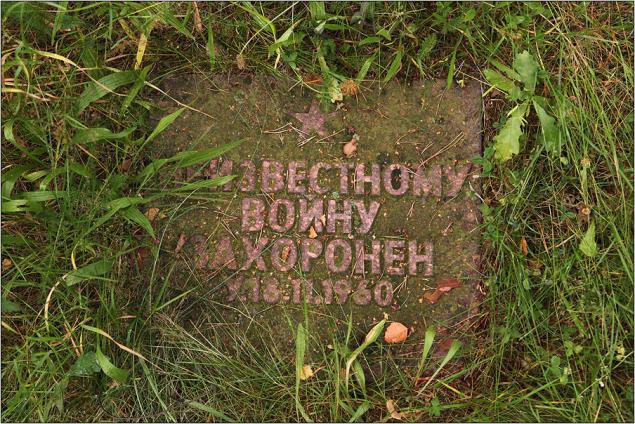
The main garrison cemetery, where are buried the Soviet soldiers who died in the last days of the Second World War, too, is a quite sorrowful spectacle, despite seven years ago to carry out reconstruction:
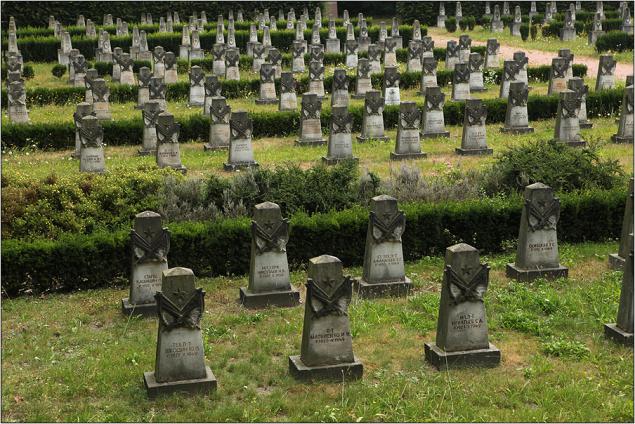
The grave of Lieutenant Colonel Ivan Shchelkova:
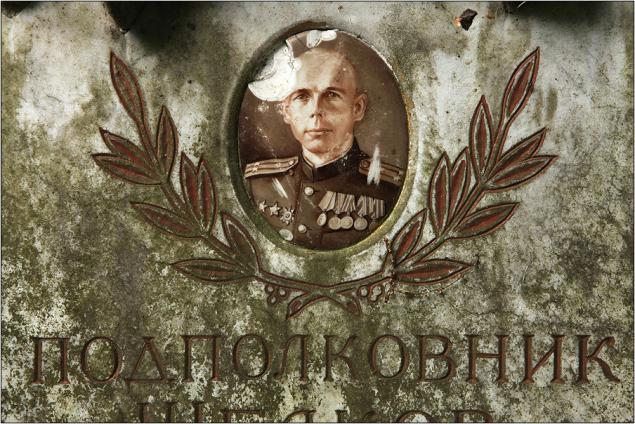
Immediately outside the territory of the Soviet garrison cemetery there are some objects of the Bundeswehr. Lost Lots forged military cemetery fence replaced unpretentious wall of the tubes and nets:

Flowers February 23:

For comparison, look now so grave in the cemetery of Soviet children kerepesi in Budapest. Recently, I spoke in detail about the reconstruction of the cemetery:

As they say, feel the difference:

It is useful to remember that while in Dresden can not find the money necessary for the salvation of the graves of Soviet children, the Russian embassy in Prague squandering millions of dollars on an extremely controversial reconstruction of the Soviet and Russian military graves in the Czech Republic. Let me remind you that the only scandalous reconstruction of the Soviet memorial on Olshansky cemetery in Prague cost Russian taxpayers approximately half a million dollars. This new obelisks were set at a price at least five times higher than their real value. It was enough to order a few obelisks on Olshansky cemetery at a realistic price, and the budget was formed to the amount for the care of children's graves in Dresden for several decades.
Another problem is that these garrison cemeteries in East Germany are not one and not two. All of them have the same undefined status. Reconstruction of Dresden by the demolition of the cemetery graves could create a very dangerous precedent for the future.
Photo: Vova Pomortsev / www.pomortzeff.com
Group in support of the Garrison Cemetery in Dresden on facebook: www.facebook.com/SowjetischerGarnisonfriedhofDresden
Source:
33 photos via ffeztromop

I'm afraid to even suggest that there children did what they were dying in such numbers. Nowhere else have I seen so many children's graves in one place. The cemetery is abandoned for more than twenty years, that is since the withdrawal of Soviet troops from Germany. Russian officials prefer to pretend that the cemetery does not exist in nature. Meanwhile, the German authorities prepared in the near future to even the graves of Soviet children to the ground.
Officially, it's called the northern sector of the Soviet garrison cemetery Dresden garrison Western Group of Forces. The first graves appeared here in 1949, when out of space on the main garrison cemetery next door. The last burial here was made in September 1987. It is not clear, however, why the victims in peacetime Soviet citizens could not go home. All the years of existence of the northern sector are buried more than 650 people, including 350 military servicemen and 250 civilians.
In a separate section of the cemetery are buried 160 children. Generally, it is quite infants aged from several weeks to one year. Now children's graves in an abandoned cemetery look like this:

03

04

05

In this picture, the most attentive will find just six abandoned children's graves:

Children began to appear on the graves of the garrison cemetery after the war. At first the children who died were buried in a small area adjacent to the main area of the cemetery. Only when there is not space left for children's burials identified a new site in the northern Gaza cemetery:

08

09

10

11

12

13

Tomb of the Western Group of Forces soldiers now look roughly the same abandoned. This is a relatively well-kept plot cemetery with the graves of the 1950s:

15

16

17

18

19

20

A children's grave it again:

22

23

24

Try to understand how it was that the Soviet garrison cemetery in Dresden, has been brought to such a sorry state. There is an intergovernmental agreement on the care of the burial sites in Russia and Germany, signed in December 1992 by the then Russian Foreign Minister Andrei Kozyrev, during a visit to Moscow, Chancellor Helmut Kohl. Under this agreement, the German side took care of all the maintenance costs of the Soviet military graves in the territory of Germany. The problem, however, is that the burial wartime German law considered only the graves of persons who died before 31 March 1952.
Where did this data is difficult to say. It was first mentioned back in the German law of 1965 on the care of war graves. Now this law is called the law of the preservation of the graves of victims of war and domination by violence. The same date is later migrated to said an intergovernmental agreement as its text prepared German side. Today, it is assumed that the signing of the agreement in the form of the Russian authorities was a mistake, because it completely ignores the fate of post-war Soviet graves. However, in hindsight the mistake is now quite difficult to fix.
Thus, under the protection of the Russian-German agreement was the only part of the garrison cemetery founded in Dresden, where are buried the Soviet soldiers who died in the last days of World War II and died of his wounds in the early postwar years. All dead or killed after March 31, 1952 are considered to have died in peacetime and, accordingly, under the agreement does not fall. In this situation, it would be logical to assume that the care of these graves will take over the Russian side. Like it or not, this is our soldiers. However, the Russian authorities preferred to forget about the existence of the cemetery.
Cole Porfirevu can say damn lucky. He died a year later after the war and was buried among the graves of Soviet soldiers on the mainland Garrison cemetery. His grave in the near future is not threatened. The content of this part of the cemetery is paid from the budget of the German:

After the withdrawal of Soviet troops from Germany, the Soviet garrison cemetery in Dresden, shifted the balance of the city. From that moment held here only the most necessary improvement works. Cemetery gradually come to desolation. Since 1996, a new cemetery was the nominal owner of the real estate and construction management of the Federal State of Saxony. In German this place called Sächsisches Immobilien- und Baumanagement, abbreviated to SIB.
The new owner of the cemetery came out with an offer ... to carry all the graves of the northern sector of the cemetery. Thus, it is planned to reduce the costs of caring for the cemetery to a minimum. Roughly speaking, the tombstones is proposed to abolish that they should not stumble on the lawn mower. Initial plans Saxon authorities suggested the elimination of all gravestones, all the elements of improvement and most of the trees in the northern sector. Themselves with the dead remained in their original places in the land. The names of those buried in the cemetery was planned to write three or five steles near the entrance to the cemetery. This reconstruction of the cemetery would have cost 250 million euros. But then the content of the cemetery converted into one big lawn, dispense would be relatively cheap.
It's like, these initial plans do not meet with understanding of first secretary of the Russian Embassy in Berlin, Vladimir Kukina, who oversees the embassy military memorial work, so the project has been amended. The general concept is preserved, but now plan to install over 20 obelisks lists buried. That is, the relatives will be able to assume at least roughly where their relatives are buried. Individual graves, however, will still be destroyed. The price of reconstruction rose initially to 300 thousand euros, and then to 350 thousand euros. This money will be allocated from the budget of the Federal State of Saxony.
That's a visual map of the Soviet garrison cemetery before and after the proposed reconstruction:

Trying to keep the cemetery in this individual is taken only by German activists. It formed an initiative group for the protection of the Soviet war memorial in Dresden. It is headed by the Dresden journalist Yana JNOC. She believes that the cemetery is one of the latest evidence almost a half-century stay in the garrison of the Soviet troops, and therefore must be preserved for history. Some rescue activities graves is still chairman of the German-Russian Cultural Institute in Dresden Wolfgang Shelike.
The activists offered help in the care of the graves, offered twice a year to carry out cleaning of the cemetery by the Russian emigrants and students from both countries. These proposals went unanswered by the Saxon government. At the same time, activists wrote to Putin, addressed to former Soviet soldiers who once served in Dresden. They wrote in the Russian Embassy Vladimir KUKIN. Not a word in reply. And the journalist Yana JNOC confident that the Russian authorities do not know the plans for the destruction of the cemetery.
Most activists are outraged by the fact that German taxpayers money in the amount of 350 thousand euros is actually to be spent on the destruction of the historical monument. For its part, the Office SIB argues that in order to bring the cemetery to the conservation of historic tombstones will cost about one million euros. "This is very similar to the fictional figure, designed to shock the public opinion," - says Yana JNOC.
Some success, activists still have. In 2010 the German federal authorities have included the northern sector of the Soviet garrison cemetery in the register of cultural monuments. Earlier in the register number only burials of the Second World War. Now the project of reconstruction of the cemetery should be agreed with Berlin. As a result of work that has to be completed in 2011, has not yet begun. However, it is not excluded that the reconstruction of the cemetery will begin this spring. Indifference to the fate of the Russian side graves in this situation plays into the hands of the demolition of tombstones.
I should add that in the territory of the northern sector of the cemetery also has the graves of Soviet soldiers killed in World War II. Such graves there are about a hundred. One big mass grave where buried 71 people, and 25 individual graves. As a rule, we are talking about the unknown soldier, the remains of which were discovered through number of years after the war. These 25 graves scattered among the graves of soldiers of Western Group of Forces. Initial plans for the Saxon government is expected to maintain only one mass grave. Separate the grave was supposed to destroy that, in general, contrary to German law and said the Russian-German agreement. Now these plans, such as revised. It is possible that this is one of the reasons for delays reconstruction. Here is one of those graves:

The main garrison cemetery, where are buried the Soviet soldiers who died in the last days of the Second World War, too, is a quite sorrowful spectacle, despite seven years ago to carry out reconstruction:

The grave of Lieutenant Colonel Ivan Shchelkova:

Immediately outside the territory of the Soviet garrison cemetery there are some objects of the Bundeswehr. Lost Lots forged military cemetery fence replaced unpretentious wall of the tubes and nets:

Flowers February 23:

For comparison, look now so grave in the cemetery of Soviet children kerepesi in Budapest. Recently, I spoke in detail about the reconstruction of the cemetery:

As they say, feel the difference:

It is useful to remember that while in Dresden can not find the money necessary for the salvation of the graves of Soviet children, the Russian embassy in Prague squandering millions of dollars on an extremely controversial reconstruction of the Soviet and Russian military graves in the Czech Republic. Let me remind you that the only scandalous reconstruction of the Soviet memorial on Olshansky cemetery in Prague cost Russian taxpayers approximately half a million dollars. This new obelisks were set at a price at least five times higher than their real value. It was enough to order a few obelisks on Olshansky cemetery at a realistic price, and the budget was formed to the amount for the care of children's graves in Dresden for several decades.
Another problem is that these garrison cemeteries in East Germany are not one and not two. All of them have the same undefined status. Reconstruction of Dresden by the demolition of the cemetery graves could create a very dangerous precedent for the future.
Photo: Vova Pomortsev / www.pomortzeff.com
Group in support of the Garrison Cemetery in Dresden on facebook: www.facebook.com/SowjetischerGarnisonfriedhofDresden
Source:


